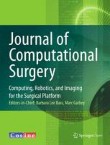Vertebra segmentation based on two-step refinement
Knowledge of vertebra location, shape, and orientation is crucial in many medical applications such as orthopedics or interventional procedures. Computed tomography (CT) offers a high contrast between bone and...
